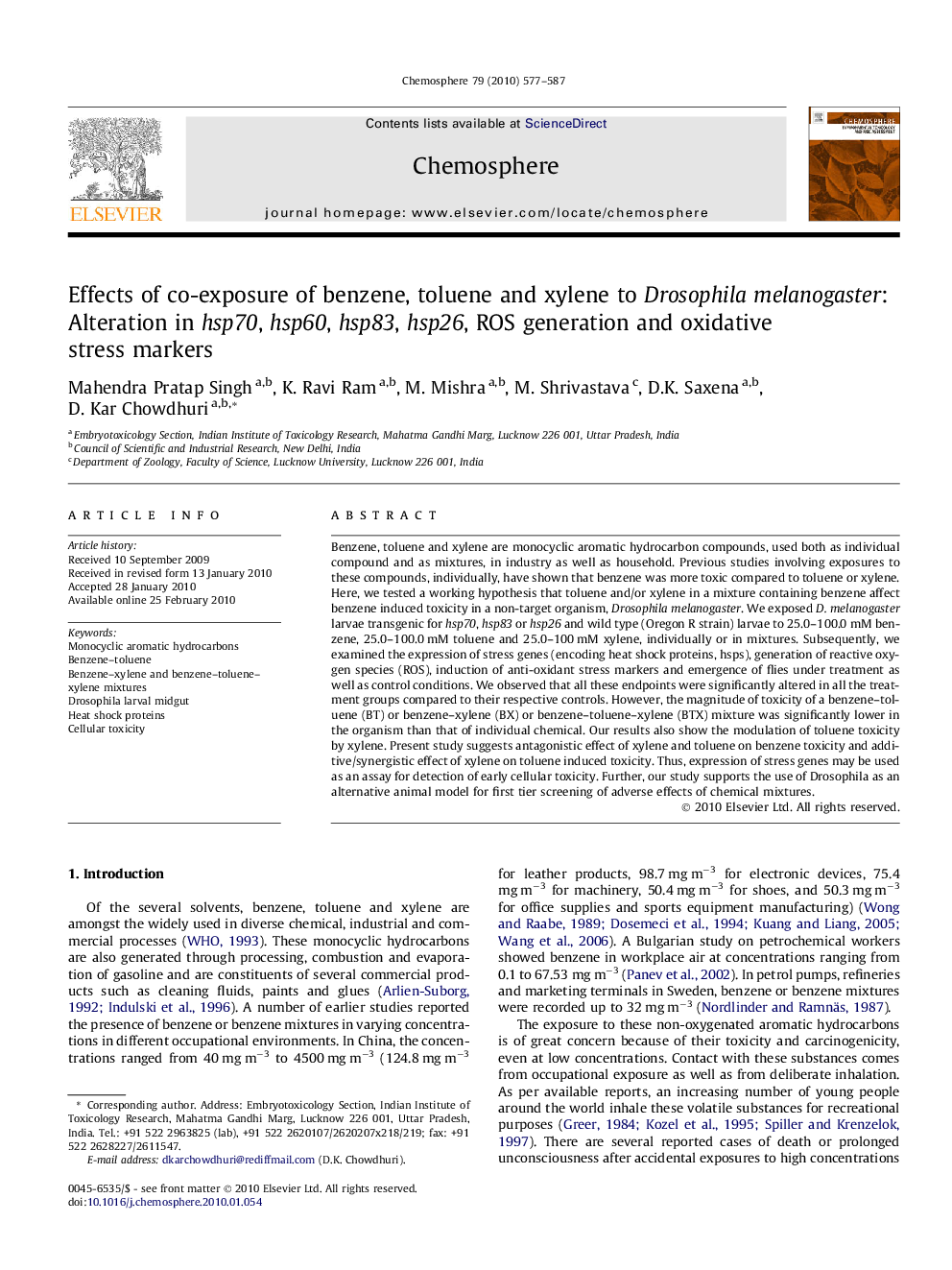| Article ID | Journal | Published Year | Pages | File Type |
|---|---|---|---|---|
| 4411646 | Chemosphere | 2010 | 11 Pages |
Benzene, toluene and xylene are monocyclic aromatic hydrocarbon compounds, used both as individual compound and as mixtures, in industry as well as household. Previous studies involving exposures to these compounds, individually, have shown that benzene was more toxic compared to toluene or xylene. Here, we tested a working hypothesis that toluene and/or xylene in a mixture containing benzene affect benzene induced toxicity in a non-target organism, Drosophila melanogaster. We exposed D. melanogaster larvae transgenic for hsp70, hsp83 or hsp26 and wild type (Oregon R strain) larvae to 25.0–100.0 mM benzene, 25.0–100.0 mM toluene and 25.0–100 mM xylene, individually or in mixtures. Subsequently, we examined the expression of stress genes (encoding heat shock proteins, hsps), generation of reactive oxygen species (ROS), induction of anti-oxidant stress markers and emergence of flies under treatment as well as control conditions. We observed that all these endpoints were significantly altered in all the treatment groups compared to their respective controls. However, the magnitude of toxicity of a benzene–toluene (BT) or benzene–xylene (BX) or benzene–toluene–xylene (BTX) mixture was significantly lower in the organism than that of individual chemical. Our results also show the modulation of toluene toxicity by xylene. Present study suggests antagonistic effect of xylene and toluene on benzene toxicity and additive/synergistic effect of xylene on toluene induced toxicity. Thus, expression of stress genes may be used as an assay for detection of early cellular toxicity. Further, our study supports the use of Drosophila as an alternative animal model for first tier screening of adverse effects of chemical mixtures.
